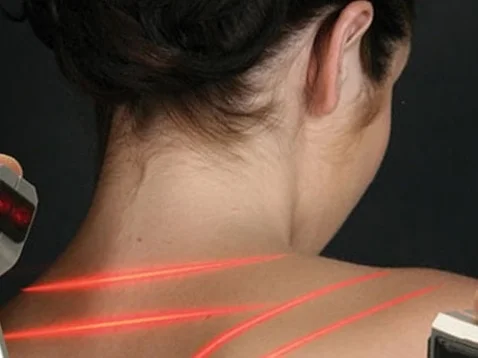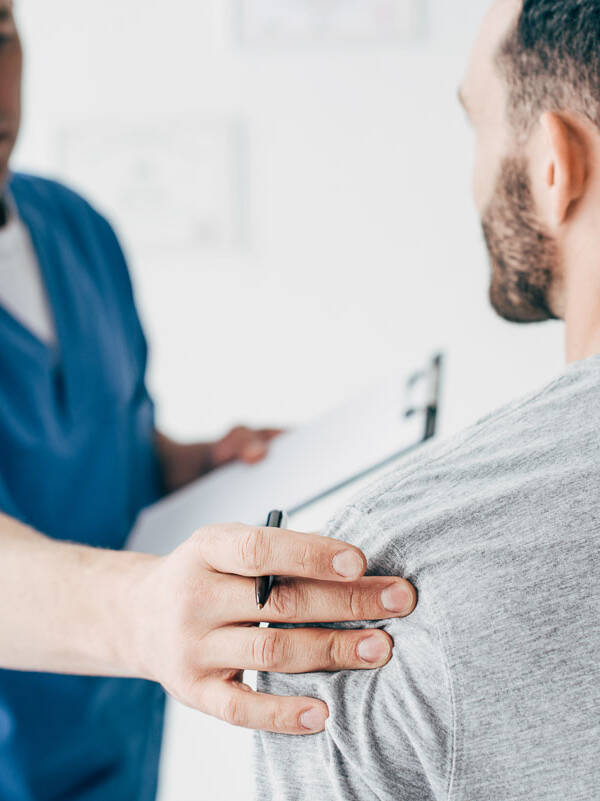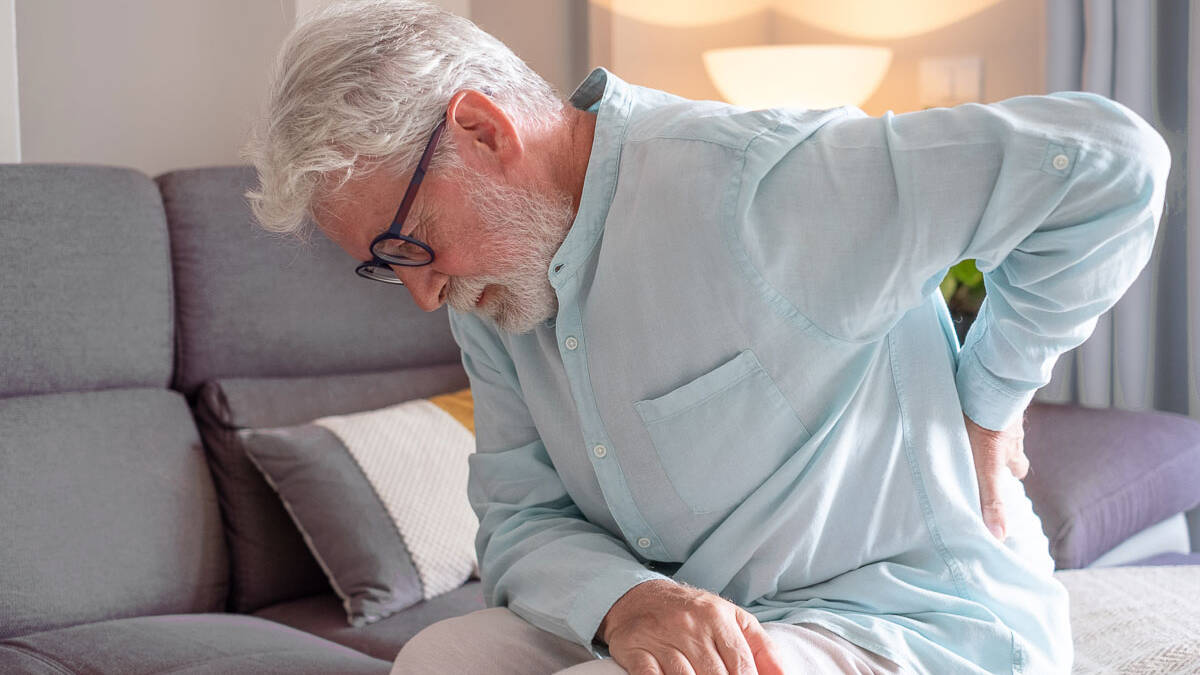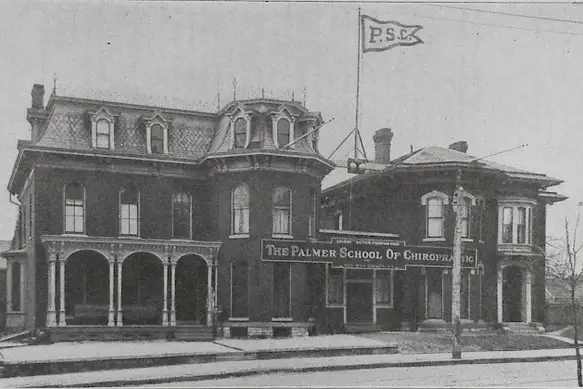How does Denver laser therapy for pain work? You might have seen the ads or heard people talk about using lasers to treat various health problems. Laser therapy is usually used for pain relief and healing and is a proven treatment for chronic neck and lower back pain.
Table of Contents
ToggleHow Does Light Affect Human Tissue?
Laser therapy uses light to produce a specific stimulatory effect on biological tissues, usually repairing, regenerating, and reducing pain. Laser and LED light stimulates “photobiomodulation”, the body’s healing mechanism. But for this post, we’ll use the simpler term “laser therapy.” Since the 1960s, people have wondered if and how laser therapy worked. In 1967, a Hungarian surgeon named Endre Mester accidentally found that red lasers stimulated faster hair growth in mice.
Since then, over 4000 studies have been published (almost 400 in 2020 alone) on laser therapy and the hundreds of conditions it treats. These studies show that laser therapy is very safe and very effective at treating many painful conditions.
How Does Denver Laser Therapy for Pain Work?
For light to affect tissues, you need three things…
- The light must be absorbed by the cells.
- The light energy must be able to penetrate deep enough to affect the tissue being treated.
- An adequate dose is delivered to that depth.
Light is absorbed by colored matter that matches the light’s wavelength. Take the example of wearing a dark shirt outside on a sunny day. You’ll get much warmer wearing a dark shirt than a light-colored one because the dark material absorbs the sun’s UV and far-infrared waves more easily. Specific types of cells (chromophores) absorb the energy from the laser and use that energy to create ATP, the energy source for all of our cells.
Laser therapy is a complex device that fixes a simple problem… PAIN!
Red light and infrared light enhance the body’s ability to:
- Clean up cellular “junk” (phagocytosis)
- Increase blood flow to injured areas through the production of nitric oxide (NO).
- Stimulate the growth of new blood vessels (angiogenesis)
- Repair injured ligaments, tendons, and joint capsules by increasing the production of collagen, keratinocytes (skin cells), and fibroblasts (important for wound healing).
Laser Therapy Penetration
Most people don’t think light can travel through the tissues, but the right kind of light definitely can. Think about shining a flashlight through one side of your hand and seeing your hand glow red- that’s an example of light penetrating the tissues and coming out the other side.
Near-infrared light at 800-1100nm can penetrate tissues quite deeply, even right through bone! Good penetration of light allows photons to be absorbed in deep tissue injuries. As we saw above, these wavelengths produce many beneficial cellular effects. The benefit of LLLT is its ability to penetrate far enough into the body to cause the changes we mentioned above.

Is Denver Low-Level Laser Therapy for Pain Safe?
Laser devices are divided into classes based on their power output. There are two main types that you’ll find in a PT or chiropractic office: Class 3 and Class 4 units, with Class 3 machines producing 0.5 watts or less and Class 4 lasers producing more than 0.5 watts. The main difference between the two classes is that class 4 lasers work faster than the class 3 machines. For example, a class 3 laser may require up to 15 minutes for one treatment while a class 4 machine (like the Erchonia lasers used at Integrative Health and Rehab) will take less than 2 minutes. This higher power is important when treating injuries to ligaments, muscles, tendons, and cartilage.
What Conditions Can Cold Laser Therapy Help?
Now that we’ve checked the box for properly exploring the question, “How does laser therapy work?”. You may recall I talked about evidence for laser therapy’s effectiveness at the top of the article. Here are a few conditions that respond well to laser therapy.
- Neuropathy: Laser therapy “has beneficial effects on the recovery of nerve lesions, especially when related to a faster regeneration and functional improvement.”
- Headache Treatment: Laser treatment for chronic migraines is just as effective as Botox injections, but it is less expensive and more effective at improving sleep.
- Musculoskeletal Conditions: 94% of articles in this study on class 4 laser for musculoskeletal pain revealed positive effects, including with complex cases like SI joint pain and whiplash injuries.
- Athletic Performance: Light therapy produces better muscle recovery and gains strength post-exercise than ice while reducing soreness.
- Complex Diseases: Light therapy can raise the standard of care and improve patient’s quality of life for a fraction of the cost of many current approaches. “Progress will lead to the imminent inception of light therapy as a mainstream treatment for multiple complex diseases… it is time to consider light therapy as a potential drug equivalent.”
So, How Does Laser Therapy Work for Pain?
By the methods explained above, LLLT stimulates energy production, increases circulation (reducing inflammation), and stimulates healing. When used with the right equipment and techniques, laser therapy produces great results in dozens of conditions, ranging from neuropathy and plantar fasciitis to arthritis and chronic lower back injuries. Laser therapy speeds up the body’s natural healing processes, fitting in perfectly with the Chiropractic philosophy. That is to treat the CAUSE of the problem, not just the symptoms. By reducing pain intensity, laser therapy can also reduce the amount of “painkillers” and anti-inflammatory drugs taken, reducing the dangers of these harmful drugs.
Is Cold Laser Therapy Covered by Insurance?
At Integrative Health and Rehabilitation in Denver, CO, we understand the importance of affordability and accessibility in healthcare treatments. Insurance plans often cover cold laser therapy, a non-invasive technique that promotes healing and reduces pain. We accept a variety of insurance providers, including Aetna, CIGNA, Humana, Medicare, and United Healthcare. This ensures that our patients can access this advanced therapy without financial strain. We offer competitive cash prices for those without insurance coverage to make quality care accessible to everyone. Contact us today to learn more about how cold laser therapy can benefit you and to verify your insurance coverage.
Interested in Low-Level Laser therapy? Our affordable Chiropractic office is conveniently located for patients in Arvada, Denver, and Wheat Ridge, Colorado! Still not sure? Check out our 5-Star reviews to see why we are the chiropractor Denver seeks for fast, effective, and lasting pain relief.

Ready for an expert opinion? Get in touch today!
With a legacy of more than 25 years, our team specializes in helping individuals triumph over back pain, neck discomfort, and persistent headaches, all without relying on addictive medications or risky surgical procedures.





